Looking (Slightly) Beyond 2044: Six Reasons To Be Interested In The 2050 Demographic Projections
The National Equity Atlas was developed as a tool to measure and track demographic change and equity across America's communities. By 2044, the nation is projected to be majority people of color, yet communities of color face persistent barriers to accessing the resources and opportunities they need to reach their full potential. These inequities are not only bad for the people being left behind: they threaten our collective economic future. As economist Lawrence Summers put it "as people of color become a majority of the population, the failure to end their economic exclusion means the failure of the American economy."
This month, the Equity Atlas team added updated demographic projections data to the Atlas through the year 2050, past the 2044 turning point. Our projections come from Woods & Poole Economics, a highly respected source used by many government agencies and researchers. These new projections can be found in the "People of Color," "Race/ethnicity," "Population growth rates", and "Contribution to growth: People of color" indicators and are available for counties, regions, and states. Here are six key demographic trends that deserve our attention:
- The population of color will continue to grow rapidly between 2040 and 2050. By 2050, 53 percent of the total population will be people of color, up from 48 percent in 2040. Between 2030 and 2040, 132 counties will become majority people of color. And between 2040 and 2050, 118 additional counties will join them, for a total of 737 majority people-of-color counties nationwide.
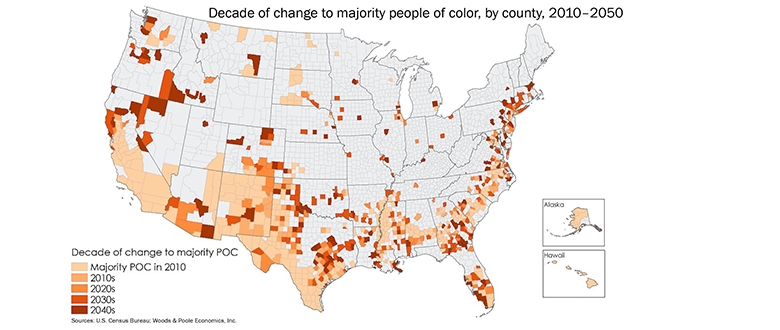
- Despite this shift, for most of these counties, Whites will remain the largest racial group. Only ten counties that will become majority people of color between 2040 and 2050 will experience a shift in their largest racial group.
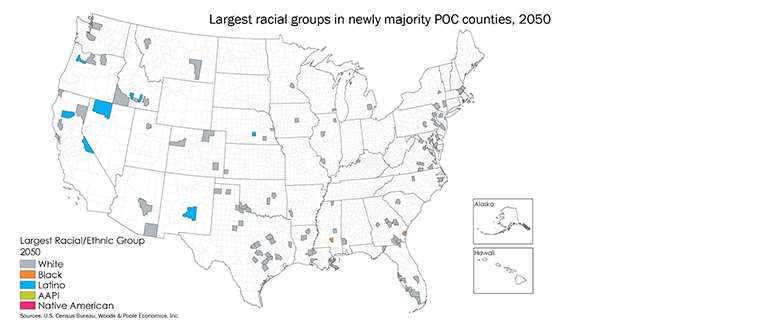
- Most people will live in majority people of color counties in 2050. By 2050, 56 percent of Americans will live in majority people of color counties. Even though just 23 percent of counties will be majority people of color, most of the population will live in those counties.
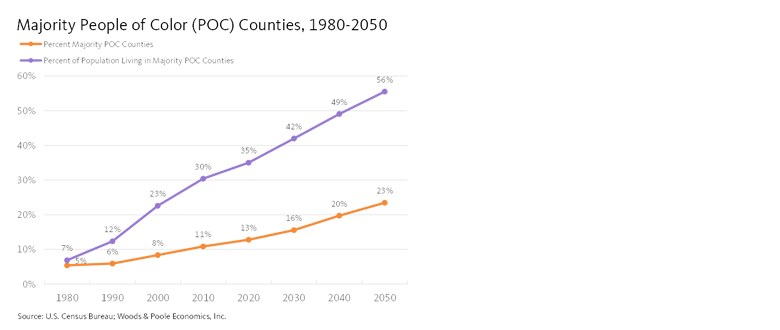
- A handful of counties will revert back to being majority white. In 2050, three counties that are currently majority people of color are expected to become majority white – San Francisco, CA; New York, NY (Manhattan); and San Juan, Utah. As the country becomes majority people of color, nearly a quarter of all counties will experience growth in their White populations. About one in ten of these counties with growing White populations are majority people of color. However, these three counties stand out as counties that will actually shift to becoming majority white. In New York County (Manhattan), this shift will happen as two major groups: Latinos and African Americans decline at rates outpacing White growth.
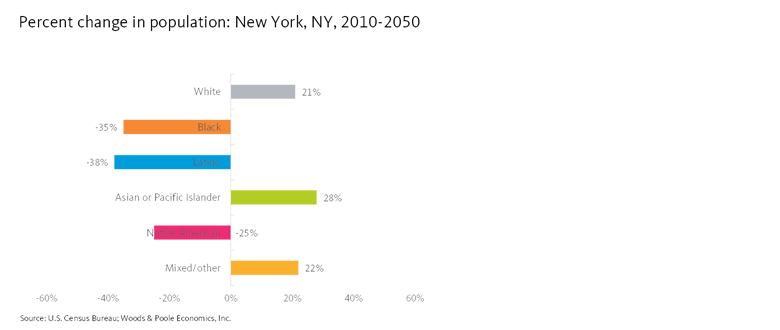
- Among the counties that will become majority people of color by 2050, many counties will still experience population decline for some of their communities of color. This phenomenon is most common with the Black population. Nationally, the Black population is expected to remain stable, growing from 12.2 to 12.7 percent between 2010 and 2050. But there is wide variation across counties, and 76 counties that will become majority people of color by 2050 will also lose Black population. Among these counties, Denver, CO will experience the largest percentage loss (26 percent) of its Black population as it moves to becoming majority people of color.
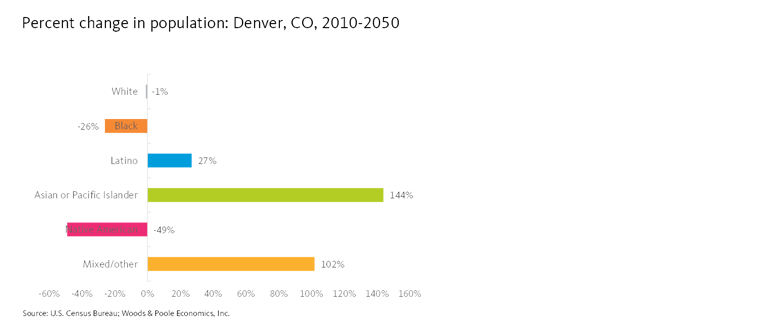
- Latinos and Asian Americans and Pacific Islanders (AAPIs) will drive growth among communities of color. Across all counties, 244 counties' Latino populations will double between 2010 and 2050, while 224 counties' AAPI populations will double. 153 will switch from being majority white or having a white plurality (the largest group in the absence of a majority) to majority or plurality Latino; 10 counties that are currently majority or plurality white will be majority or plurality AAPI.
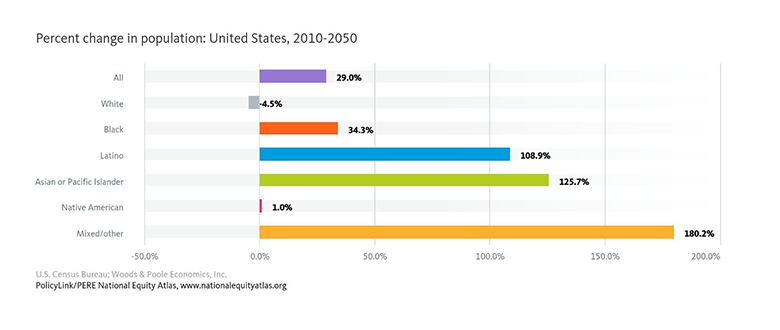
The updated demographic projections through 2050 analyzed here underscore how America will continue to grow more diverse and less White for the foreseeable future. Dozens of indicators of economic inclusion, workforce readiness, and community connectedness in the National Equity Atlas reveal persistent racial inequities. Regardless of political sways and even immigration policy over the short-term, the truth is that communities of color are central to our economic fate as a nation, and investing in people of color and removing barriers to their full participation in our economy and democracy remains an urgent national priority.